6 Songs That Were Decades Ahead of 'Groundbreaking' Music

Most great bands are considered revolutionary in some sense: You wouldn't expect anyone in the 60s to sound like Radiohead or Nine Inch Nails, just like you wouldn't expect anyone in the '30s to sound like The Beatles. That's why the songs on this list are so bizarre to listen to; they were so far ahead of the curve that their genres weren't even invented yet.
In fact, we're going to say that only time travel can explain songs like ...
Cromagnon -- Caledonia (or, Industrial Music in the 60s)

Few things have scandalized more parents than the mainstream debut of Nine Inch Nails in the mid-1990s. "Is this what music has come to?" was the reaction of anyone over 40 after listening to the distorted, chaotic industrial noises Trent Reznor had forced into our living rooms. Sure, Hendrix and others could get pretty noisy back in the day, but nothing in the golden days of the '60s sounded like this:
Meanwhile, music critics fawned over NIN's second album, The Downward Spiral; even The New York Times praised Reznor for having "perfected the use of noise as both atmosphere and weapon." NIN brought industrial music to the mainstream, a genre that had existed since, what, the early 80s at most?

We always assumed "industrial music" was the inevitable reaction of snorting cocaine off a sound mixer.
But, decades before ...
Loud, pounding drums; harsh, whispered vocals; unusual instrumentation; and a somewhat catchy tune buried underneath. That old-timey bit at the beginning? That's sampling. Caledonia by Cromagnon has all the staples of modern industrial music (minus the angsty lyrics), and it came out way back in 1969.
What makes this even eerier is that the band released that one album and then simply vanished. As the legend goes, Brian Elliot and Austin Grasmere were two average pop musicians who got tired of writing non-insane music and decided to try something a little different (meaning, something completely insane). Calling themselves Cromagnon, they hooked up with a hippie commune called the Connecticut Tribe and recorded an album titled Orgasm.
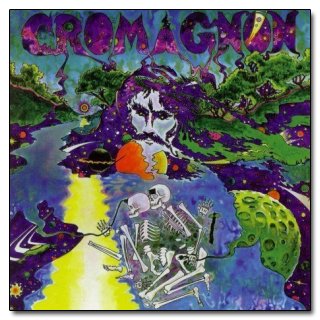
But you could probably tell that from their cover art.
The album never really made any headway, and no one paid attention to the damn thing until 2000, when it was reissued as Cave Rock, which is probably the biggest step down in titles since Puff Daddy became whatever the hell he's called now.
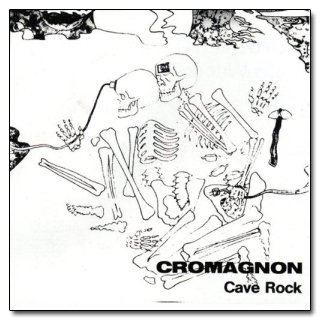
If Gary Larson did the cover art for a prog rock album, this would be it.
Caledonia is pretty much the only song in the album that has any real structure to it: Yes, the rest is even crazier. Also, those guttural drum sounds weren't generated by a guy tapping on a drum machine -- they used actual sticks and stones.

"I'd do the same thing, but I don't wanna hurt my delicate hands."
White Noise -- Love Without Sound (or, Radiohead in the 60s)

When Radiohead's Kid A came out in 2000, its weird electronic sounds blew the minds of critics and listeners alike. By the end of the decade, it was consistently rated as one of the most revolutionary albums ever. In 2009, both Pitchfork and Rolling Stone ranked Kid A as the best album of the '00s, calling it "that exceptional artifact of modern culture" and "a next development in rock music that was both logical and surprising."
Some fans hated it, of course, but that's because their brains weren't yet prepared to understand the future of music.

It was a different time, with lower standards for album covers.
But, decades before ...
That's Love Without Sound from 1968, over 30 years before Kid A.
In 1968, American classical bassist David Vorhaus got together with two composers from the BBC Radiophonic Workshop and formed the band White Noise. Their first album, An Electric Storm, flew pretty much completely under the radar. It didn't sell well, no one reviewed it -- it's almost like people weren't eager to listen to a band named after the annoying noise your TV makes when something's broken. So, they were relegated to obscurity.

Along with other bands like "Nails on a Chalkboard" and "That Sound Your Dog Makes When He's Choking on a Ball of Hair."
But listen carefully to Love Without Sound: ethereal, jumpy vocals; synths and loops as the lead instruments; almost no percussion -- shit, all you need is an indecipherable video with a skinny guy dancing like he's having a seizure and it's practically a modern electronica track.
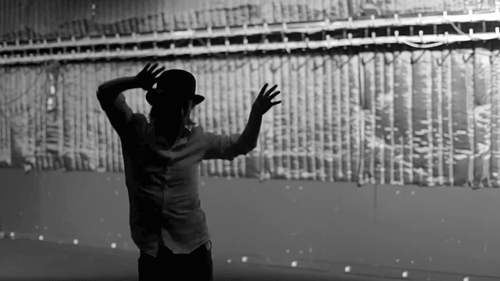
The secret of Radiohead's success, apparently.
If that type of music was hard to digest as recently as 2000, no wonder White Noise never found an audience: Their heads were too busy exploding. After their first album didn't do so well, most of the band moved on to other projects, with only one member, Delia Derbyshire, ever really making any kind of name for herself. Derbyshire is mainly known for composing the trippy Dr. Who theme song -- a gig she probably got thanks to the fact that she was obviously a time traveler herself.
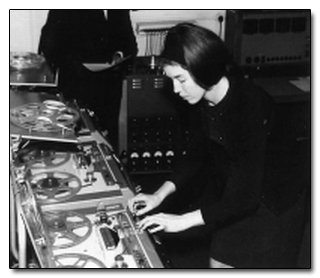
"The controls are set, gentleman -- we're off to kill Hitler."
Jean-Jacques Perrey -- E.V.A. (or, Daft Punk in 1970)

Everyone knows bands like Daft Punk are retro -- that's half their charm. What makes them special, however, is the combination of those funky, smooth sounds with modern synthesizers and techno beats. Daft Punk's 2001 album Discovery took the world by surprise and became a multi-million-selling classic. Pitchfork said: "Daft Punk's first album had helped refresh house music in the mid 1990s; the second went further, rewriting electronic pop's pleasure principles to such a degree that when it came out a lot of people thought Discovery must be a put-on."
But, decades before ...
Check out this track from 1970:
If that sounds like it was made with the same instruments Daft Punk uses, that's because it was created by one of the pioneers of electronic music, Jean-Jacques Perrey, using the predecessors of today's synthesizers.
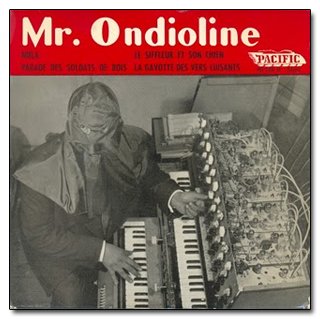
That synthesizer gained sentience and evolved into a member of Daft Punk.
That's Perrey himself in a mask, much like the members of Daft Punk; apparently, in France being an electronic musician is shameful and sneer-worthy. After hooking up with Robert Moog, the inventor of the first commercially available (but still incredibly expensive) synthesizer, Perrey began releasing albums that were basically demo reels featuring Moog sounds. One of those was his 1970 album Moog Indigo, which contained the song above, E.V.A.
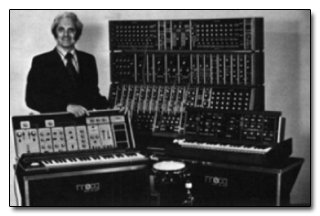
Above: Robert Moog and his terrible robot children.
E.V.A. was so ahead of its time that, when Fatboy Slim remixed it, they pretty much left it as it was. Currently, at age 82, Perrey enjoys his status as the oldest living hipster.

"I was being post-ironic before irony existed."
Don't think the Moog synthesizer was the first electronic instrument ever, though: Way back in 1957, researchers at Philips began experimenting with prototype instruments, producing stuff like this:
Slap some creepy visuals on that and it's almost an Aphex Twin track.

Of course, "creepy" is a pretty key part of Aphex Twin's style.
Francoise Hardy -- Je n'attends plus personne (or, if Billy Corgan was a French girl in the 60s)

The Smashing Pumpkins' Mellon Collie and the Infinite Sadness offered a, for 1995, pretty original combination of the crunchy, loud guitars of grunge rock mixed with poppy choruses and shameless lyrics of post-high school lovesickness. Critics praised the album for its scope and ambition. Time named it the best of the year, claiming that it "soared as high as its lofty ambitions, an Icarus with wings that worked," which proves that the pompousness was contagious.
But people could be forgiven for getting melodramatic: After all, no one had heard anything like this before.
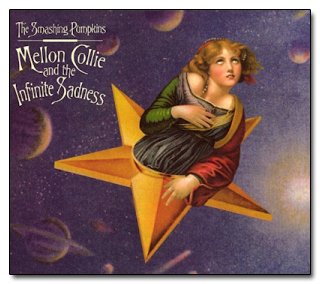
Yeah, that pretty much looks like freshman year felt.
But, decades before ...
... unless you lived in France, that is. If you did, then perhaps you've already heard this:
Her name is Francoise Hardy, and while she's considered legendary and iconic in France, she never really made the jump to America, because let's face it, if it's not in English, we can't really seem to give much of a fuck.

"French music awards? Whoop-dee-fucking-doo."
In 1964, she released her fourth album, Mon amie la rose, which includes the number above, Je n'attends plus personne. So, while The Beatles were still singing "Love Me Do," this chick was producing a multilayered post-grunge-ish song featuring heavy, distorted guitars mixed with melancholic verses about love lost and hearts broken and all that.

Which you'd know already if you'd paid attention during French class.
Listen closely to that guitar bridge around the 2:00 mark, followed by the dramatic reprise -- this is the part of the mid-90s video where they show you rapid cuts of random people looking angsty while the singer is trapped in an enclosed space. Sure, she doesn't sound as angry-at-her-own-emotions as Billy Corgan, but then again, few people do.

That's right, Billy. Take it out on the guitar.
Lothar and the Hand People -- Machines (or, Psychedelic New Wave)

In the early 80s, and with the help of a young MTV, new wave music hit the world like a brick. Bands like Kraftwerk and Gary Numan and Tubeway Army had been singing about robots and using drum machines for a few years by that time, but it wasn't until we could see the ridiculous suits and stupid hairdos on our TV screens that the phenomenon really exploded. Even established musicians like David Bowie and Peter Gabriel started sounding like this:
It was a new sound for a new era. Regarding Shock the Monkey, AllMusic says: "the song's rather gimmicky arrangement ... dominated by that stuttering four-note figure that's the relentlessly repeated hook, sounded nothing like anything else on the radio at the time."
But, decades before ...
... unless you listened to oldies radio and happened to catch this:
Believe it or not, that's actually a psychedelic rock band from the late 60s called Lothar and the Hand People (which just sounds like a really low-budget puppet show). Most of their output was exactly what you'd expect: songs about making love, going into space and making love while going into space.

While stoned, presumably.
However, "Machines," a song on their 1968 debut, Presenting ... Lothar and the Hand People, was something else entirely. It's got percussion that sounds like a modern drum machine, repetitive, canned guitar riffs, impersonal vocals -- even the lyrics sound like something you'd expect to hear from a guy doing the robot.
The only thing that ruins it is that their fashion sense was the exact opposite of the slick new wave look:
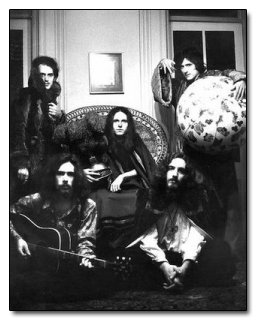
Filthy, disgusting hippies.
Pigmeat Markham -- Here Comes the Judge (or, Hip-Hop in the 60s)

Ask anyone who knows a little about hip-hop and they'll tell you the first rap song ever was "Rapper's Delight" by Sugarhill Gang, released as a single in 1979 and on the group's first record the following year.
Brevity hadn't been invented yet.
Ask someone who knows a lot about hip-hop, though, and they'll probably tell you that the underground rap scene dated to around the mid-70s, you ignorant fool. Either way, "Rapper's Delight" is still a huge landmark; as AllMusic puts it, "more than any other, the single launched the hip-hop craze and introduced the world to the major musical innovation during the last two decades of the 20th century." That's right, we're not even counting the fact that it technically came out in the 70s, because it took until the 80s for rap to really catch on.

And until the 90s for this to become acceptable rapper dress.
But, decades before ...
In 1968, long before rap was even created, this record came out:
That's Here Comes the Judge by Dewey "Pigmeat" Markham, who was actually a comedian. In one of his routines he played a judge character forced to listen to incredibly stupid cases, often replying with snappy retorts. Thanks to that whole segregation thing our grandparents were so crazy about, Markham remained relatively obscure up until the 1960s, when Sammy Davis Jr. made a habit of quoting his judge sketches on TV.
Davis began referencing the sketches so much that "Here comes the judge!" basically became his catchphrase. With a famous singer going on TV playing his routines, Pigmeat figured the next logical step would be making a music record. He recorded a novelty single featuring one of his judge sketches on one side and a sort of spoken theme song for the character on the other -- basically, a rap song.

If the single had caught on, rap fashion would be very different today.
We hadn't even landed on the goddamn moon yet, and here's a straight-up (hilarious) rap from a guy known primarily as a comedian. Now, we're not saying that being a comedian improves musical ability or somehow lets you see the future of music -- we're just saying you should keep an eye out for Cracked: The Robot Hip-Hop Synthesizer Album later this year.
To read more of Ashe's work, check out weirdshitblog.com.
Be sure to pick up our new book so you can learn how to be an unappreciated musical genius.
For more modern concepts that predate what we think, check out 11 Modern Technologies That Are Way Older Than You Think and 6 Depraved Sexual Fetishes That Are Older Than You Think.
And stop by Linkstorm to see some AngelFire sites that were before their time.
And don't forget to follow us on Facebook and Twitter to get sexy, sexy jokes sent straight to your news feed.
Do you have an idea in mind that would make a great article? Then sign up for our writers workshop! Do you possess expert skills in image creation and manipulation? Mediocre? Even rudimentary? Are you frightened by MS Paint and simply have a funny idea? You can create an infograpic and you could be on the front page of Cracked.com tomorrow!